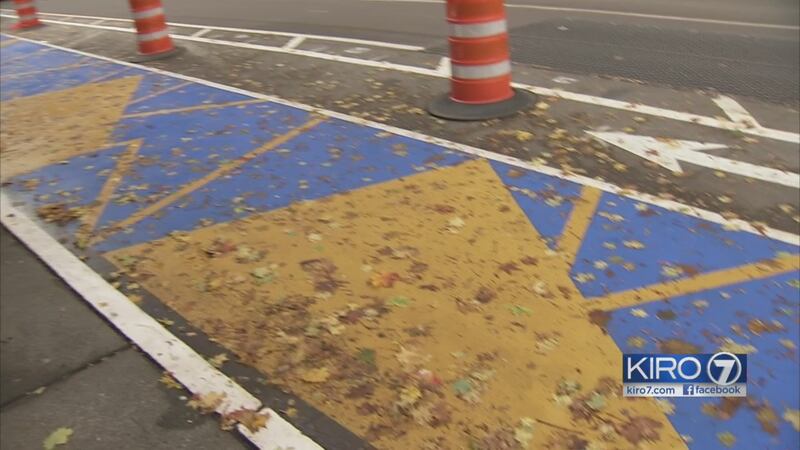For the past 30 years, Tom Scherer has worked in Downtown Seattle. The past six years he has worked in an office overlooking Westlake Park, an area he was once reluctant to hang around.
“Pioneer Square has their own issues, Westlake has issues. Some of the drug dealers that were here have moved a little bit north, or a little bit west,” Scherer says.
What changed? Scherer says the opening of a playground for children and picnic tables changed the perception and use of Westlake Park.
“If you're doing illegal activity, you don't really want an audience,” Scherer says. “There's a lot more people in the park year-round, playing games, doing stuff.”
After much emphasis in the area, Seattle Police Department says aid calls nearby dropped by nearly 20 percent in 2015.
Scroll down to keep reading.
Trending headlines
- Another windy day Tuesday: Here's what to expect
- Powerful winds bring down trees, leave thousands without power
- 1 dead, 2 injured after tree falls on car in Renton
- 15,000 scientists warn it will soon be 'too late' to save Earth
- Ex-football player charged with murder in wife's death
Seattle DOT, as part of their Pavement to Parks Project, is busy painting an area of Pine St from 3rd Ave. to 4th Ave blue and yellow.
It will soon become known as “Pine Street Plaza” and while it removes several parking spaces, it will become a food truck lot.
“These are great public spaces downtown and they were becoming negative spaces with negative behavior. Our idea was not to displace anybody, but to invite more people in,” says Jenn Casillas, with the Downtown Seattle Association (DSA).
The DSA, a consortium of city and private business entities, will manage the area once Seattle DOT finishes its work to get it ready sometime early next month.
The idea is to take what happened in Westlake Park and make Pine St. between 3rd and 4th Ave. an extension.
“People feel more safe, people feel more welcomed into spaces they will return. People are starting to meet people, we have business meetings in the parks,” says Casillas.
After much consternation, city groups feel they have found an answer on how to improve public spaces near the infamous 3rd and Pike/Pine corridor, otherwise known for crime and open-air drug dealing.
The idea, the DSA says, comes from success seen in Bryant Park in New York City.
And while it may not be a silver bullet to crime, people like Tom Scherer say this could signal a rejuvenation in a troubled spot.
“People on the street. Make a difference, take back your turf,” Scherer says.
Cox Media Group








